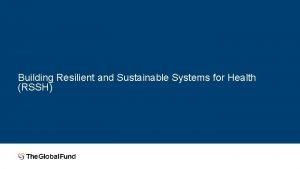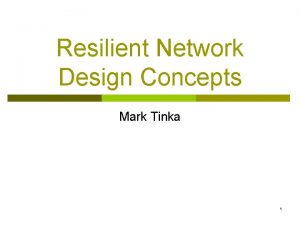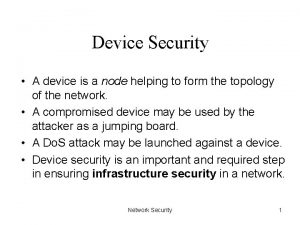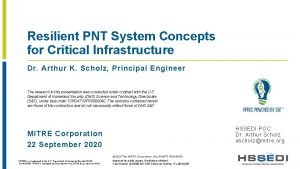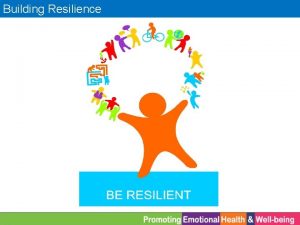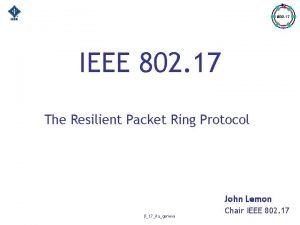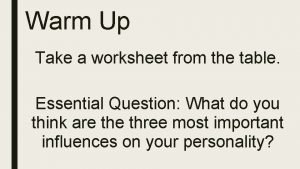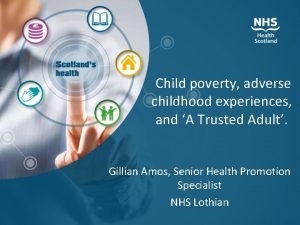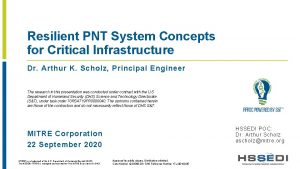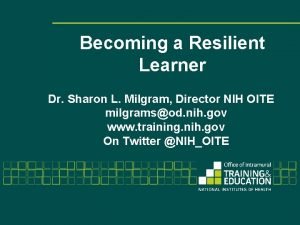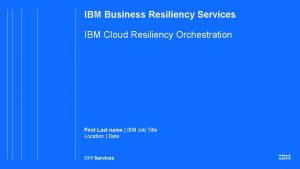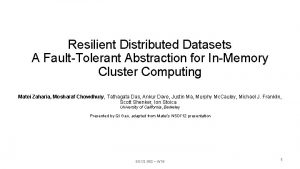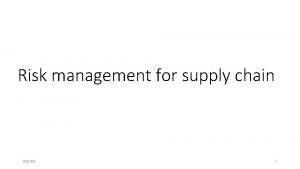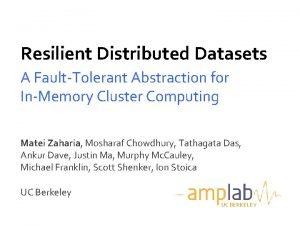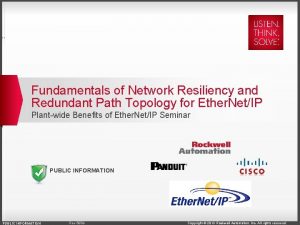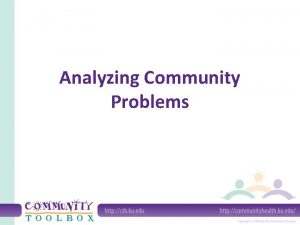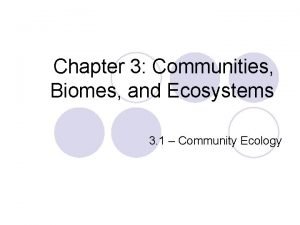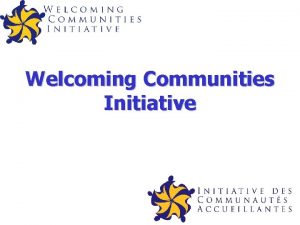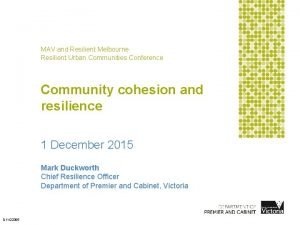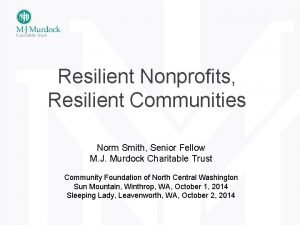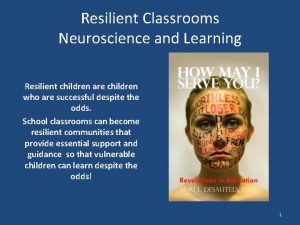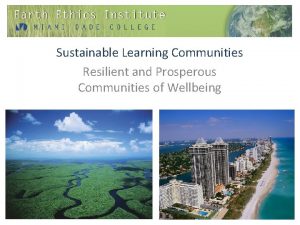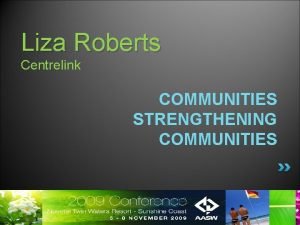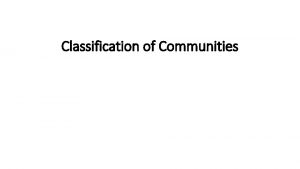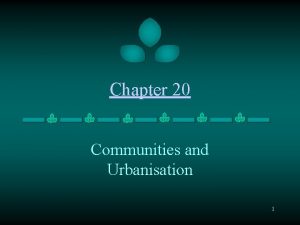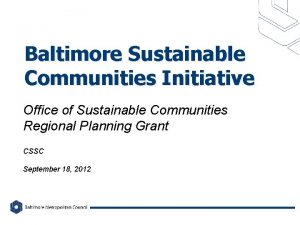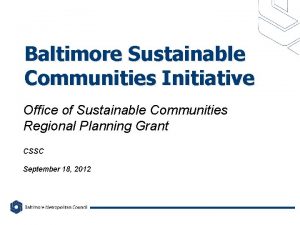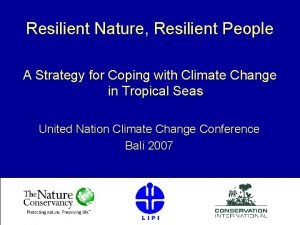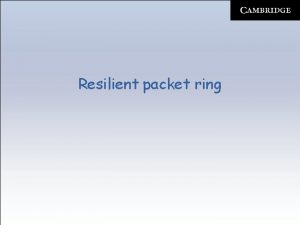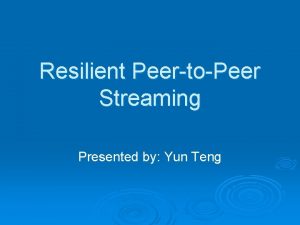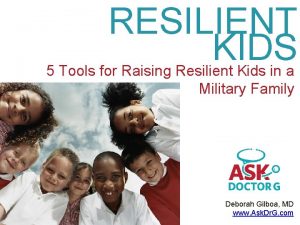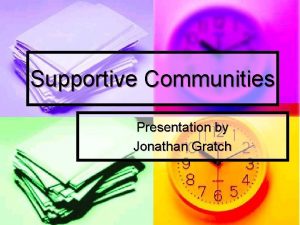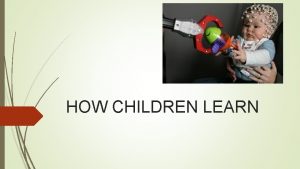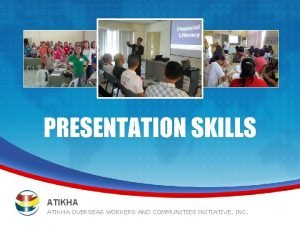Resilient Children Resilient Communities Initiative This presentation was




























- Slides: 28

Resilient Children/ Resilient Communities Initiative This presentation was created as part of the Resilient Children/Resilient Communities Initiative, a partnership between the National Center for Disaster Preparedness at Columbia University’s Earth Institute and Save the Children. Funded by a grant from the global healthcare company GSK.

Resilient Children / Resilient Communities Tabletop Exercise Enter Location Enter Date

Agenda 10: 00 AM 10: 20 AM 10: 30 AM 11: 15 AM 12: 00 PM 12: 45 PM 1: 30 PM 2: 00 PM Opening Remarks Exercise Overview STARTEX – Module A Module B Lunch Module C ENDEX – Hotwash Adjourn

Background • The Community Resilience Coalition (CRC) and Community Preparedness Index (CPI) have identified gaps in preparedness of childserving institutions • Planning templates are being developed for child-serving organizations and being integrated into a sustainable plan • The exercise will be designed and evaluated based on the Homeland Security Exercise and Evaluation Program (HSEEP)

Purpose • The purpose of this exercise will be to test plans and communication protocols in response to a disaster requiring evacuation and/or shelter-in-place of childserving institutions • This exercise will explore intra-sector plans as well as cross-sector coordination for child-serving institutions and other agencies/organizations that would be part of the response • This exercise will focus on meeting the unique needs of children, including those with special needs

Scope • The primary scope of the exercise will be on the aspects of response and recovery that impact child -serving institutions • This includes institutions that work directly with children as well as those whose actions will impact child-serving institutions • This exercise will also be limited in scope to what is under the control of (insert jurisdiction) in the response and recovery phases

Objectives 1. Demonstrate that evacuation and/or shelter-in-place plans are developed and operational among child-serving organizations 2. Ensure the effectiveness of communications systems/processes within sectors, as well as across sectors 3. Ensure that children with special needs are able to be accommodated with existing response plans 4. Identify existing partnerships and determine new partnerships and/or formalization processes to be pursued in ongoing planning efforts 5. Explore issues related to long-term recovery of children after a disaster, and the status of existing plans to meet these needs

Assumptions During this exercise, the following assumptions apply: • The scenario is plausible, and events occur as they are presented • There are no “hidden agendas” or trick questions • All Players receive information at the same time • Departments and organizations not represented at the table are assumed to be cooperating and supporting the response using their standard procedures and policies • Discussions that occur during this exercise are not necessarily precedent setting

Facilitation Strategy Suggested process: • Large Group/Small Group • Small group by sector • Scenario elements are presented to large group, small groups discuss and report out in a singular large group discussion • Repeat for each module • Module A – Hour 0 -1 • Module B – Hours 2 -24 • Module C – Hours 72+

Roles • Facilitators – Ask discussion questions and provide scenario information to support group discussion related to the objectives • Evaluators – Observe and record actions related to the objectives • Evaluators will generally not interact with players, except for clarifications • Players – Interact with each other and exercise information based on existing plans and procedures

Facilitator/Evaluator Responsibilities Facilitator responsibilities include: • Directing the movement and flow of the sessions at your assigned table • Keeping the discussions on track and at the appropriate level • Following established processes • Identifying and addressing the appropriate issues Evaluator responsibilities include: • Use EEGs to confirm that evaluation objectives are met • Take detailed notes concerning significant activities observed, including the time they were initiated or completed • When more than one evaluator is assigned to an area, divide responsibilities to ensure detailed evaluation of player activities • Stay in proximity to player decision-makers at your assigned tables • Focus on functions and tasks, as specified in the EEGs

Assignments Sector/Table Health/Healthcare Childcare #1 Childcare #2 (including afterschool) EM/First Responders Schools Community/Corporate State/Other Facilitator Evaluator

Safety/Security • Begin and end all external communications with “This is an Exercise” • Exercise may be terminated for real world emergencies • Real world events will be identified by the phrase “Real World” • Communicate any real world safety/security issues to the nearest exercise facilitator/evaluator • Panic and aggression are not part of the exercise today • Any act of aggression will be considered a real-world threat • Weapons Policy: • No weapons of any kind are allowed in the exercise area. The presence of any weapon will be considered a real-world threat • On duty law enforcement personnel may carry weapons based on their service requirements

Questions? STARTEX

Scenario Module 1 • A major earthquake has just struck (insert proximal location). The epicenter is 15 miles outside of (Insert location) and initial estimates are that the earthquake was a magnitude 6. 8 and lasted approximately 90 seconds. • There is major damage in (Insert location) and the surrounding counties including: • • Collapsed freeway overpasses Collapsed buildings Widespread power outages Loss of water and sewage to many areas Structural damage to many buildings, with some collapses Cell phones are functioning, but intermittently 911 System is overwhelmed First responder radio systems are functioning, with only sporadic outages • Your facility is: • If your nametag has a green dot, it is not significantly damaged, but is without power and water, and the surrounding roads are not accessible. • If your nametag has a red dot, it is severely damaged, with cracks running up the full length of the walls and some areas of the building collapsed.

Module 1 Discussion Questions • What is your current state of preparedness going into this scenario? • How do you determine whether to stay or go? • What plans/processes are in place to notify others of your situation? • According to your current plans/processes, how are your receiving information and/or instructions? • Is this information trusted/verified? • Do you have staff/children that have special needs (language, cultural, clinical, developmental, access/functional)? • If so, what immediate impact will this have on them?

Module 1 Discussion Questions • Report on small group discussion by sector • What are the early priorities and actions from: • First Responders? • Emergency Management? • How much do current plans or assumptions relay on external partners? • Are those partners prepared to function collaboratively?

Scenario Module 2 • There is widespread damage throughout the region with reports of the earthquake being felt as far as 900 miles away in 5 surrounding states • The interchange near (Insert location) has significant structural damage and is closed. Other overpasses are closed pending safety inspection. This is affecting all major highways and many surface roads, including (Insert major thruway). • (Insert major tunnel and/or bridge) has reports of some debris falling form the ceiling. It is closed pending safety inspection and repairs. The timeline for closure is not known at this time. • Landslides on the (Insert thruway) have closed that highway. • The Governor has declared a major disaster for the State and the President is expected to make a similar declaration within the hour • State assessment teams are en route to all affected areas. ETA is unknown and it may be several days before significant assistance is available. • Mutual Aid agreements have been activated with surrounding states, although the damage in surrounding counties in other states is severe. • Federal resources from the Federal Emergency Management Agency (FEMA) and Health and Human Services (HHS) and other agencies have been activated and are expected to be functional in approximately 72 hours.

Scenario Module 2 (cont) • Hospitals are beginning to see surges of patients with minor to severe injuries, including pediatric injuries • All facilities are reporting that they are overwhelmed and cannot receive patient transfers • People have begun showing up at schools and child-care programs to get their kids. Some are parents/guardians, while others claim to be relatives or family friends and neighbors

Module 2 Discussion Questions • What plans are in place to reunite children with their parents? • For healthcare facilities, how will you accommodate a surge in pediatric injuries? • What existing partnerships are in place to assist you? • Do you have staff/children that have special needs (language, cultural, clinical, developmental, access/functional)? • If so, what is the impact on them at this point in the scenario? • What plans/procedures do you have for assessing the damage to your facility? • What are the statuses of emergency shelters?

Module 2 Discussion Questions • Report on small group discussion • What existing partnerships are in place to assist you? • Are there new partnerships you have identified? What are they? • How are these partnerships formalized?

LUNCH 45 minutes

Scenario Module 3 • The acute phase of the response is over, and search and rescue operations are concluding. The majority of the most severe damage is in (Insert locale), although there is moderate to minor damage as far away as (Insert locale). • Initial damage assessments for (Insert county) estimate 3045% of the buildings in the county are damaged with 10 -15% sustaining major structural damage. • FEMA has arrived in a limited capacity, along with a Disaster Medical Assistance Team (DMAT) from HHS. • Shelters have been established and additional functions are being added (medical, mental health, etc. ). • Power is expected to be out for over 80% of the county for at least the next 2 weeks. • Cell phone communications is intermittent, but expected to be restored partially in the next 24 -48 hours. First responder radios are functioning.

Module 3 Discussion Questions • What are the plans to meet the needs of children in recovery? • How will you assess your facility for occupancy? • If your facility can not be occupied for an extended period of time how will you continue to provide services? • What are the plans/procedures for communicating with: • Parents/Guardians? • Staff/Co-workers? • Who else needs to be notified? • As response transitions into recovery, how does this affect: • First Responders? • Emergency Management? • Hospitals?

Module 3 Discussion Questions • Report on small group discussion • What long-term resources could become available? • How can organizations access these? • How should organizations communicate their needs? • What are the long-term needs of children in recovery? • What can be done to support this?

Questions? Hotwash

Next Steps • All EEGs due to (Insert name) • Collect all Debrief Surveys after Exercise • Rapid analysis immediately following the exercise • First Draft After Action Report/Improvement Plan – 30 days • After Action Conference – Part of CRC Schedule • Final Report – 90 days

Thank You!
 What are types of ecological succession
What are types of ecological succession How can more resilient
How can more resilient Feature vectors
Feature vectors Resilient and sustainable systems for health
Resilient and sustainable systems for health Tinka design
Tinka design It came on great oiled resilient striding legs
It came on great oiled resilient striding legs Cisco ios resilient configuration
Cisco ios resilient configuration Macro anatomy of gingiva
Macro anatomy of gingiva Resilient pnt
Resilient pnt David korowicz
David korowicz Resilient packet ring
Resilient packet ring How can be more resilient
How can be more resilient Resilient temperament definition
Resilient temperament definition How can be more resilient
How can be more resilient Pnt gnss
Pnt gnss Prepared and resilient learner
Prepared and resilient learner Ibm cloud resiliency orchestration
Ibm cloud resiliency orchestration Resilient distributed datasets
Resilient distributed datasets Supply chain risk register
Supply chain risk register Iteratrion
Iteratrion How can be more resilient
How can be more resilient Resilient attitude
Resilient attitude Redundant path
Redundant path 4 maneuvers of leopold
4 maneuvers of leopold Smallest anteroposterior diameter of the pelvic inlet
Smallest anteroposterior diameter of the pelvic inlet Language repertoire definition
Language repertoire definition Problems of our community
Problems of our community Sites
Sites Orderly natural changes and species replacements
Orderly natural changes and species replacements



